
锡石宝石:特性、含义、价值等
 锡石是一种光泽的矿物,数千年来一直被用来提炼锡。它还是一种拥有令人惊叹的色散(色彩缤纷的闪光)的宝石,其色散远胜于钻石。
锡石是一种光泽的矿物,数千年来一直被用来提炼锡。它还是一种拥有令人惊叹的色散(色彩缤纷的闪光)的宝石,其色散远胜于钻石。
锡石是稀有还是常见?锡石作为一种矿物,很常见,遍布世界各地。然而,可刻面的宝石级晶体却非常罕见,而且通常体积很小。
锡石无论在工业还是宝石学上都拥有诸多益处,使其成为一种被低估的珍品,尤其受到收藏家的青睐。本指南将带您了解锡石珠宝、宝石、用途和价格的一切!
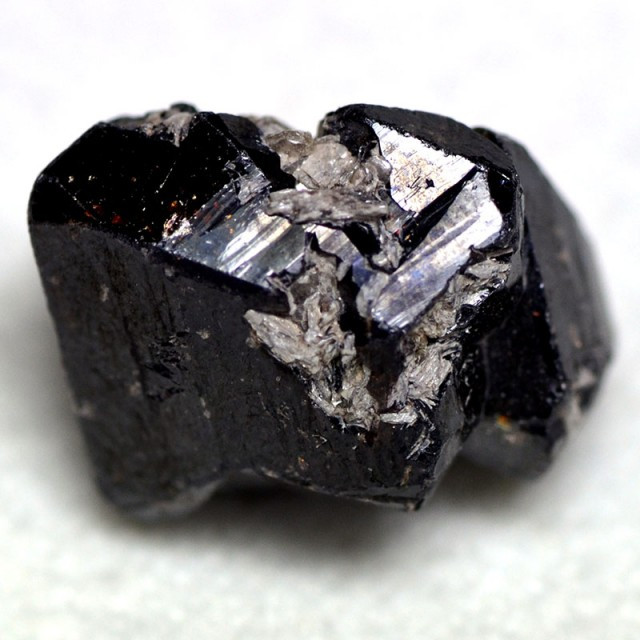
关于锡石
锡石是一种半宝石,但其色散(火彩)几乎是珍贵宝石钻石的两倍。它是射手座的星座石,在命理学中与2和8相关。
锡石最常见的昵称是锡石,但其他一些绰号是:
锡晶石
红宝石锡
Nadelzinners(弗里斯兰语,意为“锡矿石”或“晶体锡”)
针状锡矿
可备用锡
Stannum caliciforme(拉丁语,意为“杯状锡”)
锡石除了用作宝石之外,还有什么用途?你可能已经从上面的名称猜到了,锡石的主要用途与锡有关。
纵观古今,锡石一直是锡金属的首要来源。为什么呢?因为这种矿物的锡含量高达78.6%!
这些锡石锡都去哪儿了?锡在世界范围内最广泛的应用是电子产品——包括手机——锡是电路板焊接的理想材料。锡的熔点低,使焊接过程中的粘合更容易。
从锡石中提取的锡的其他用途包括容器和抛光粉。

锡石规格和特性
锡石是一种氧化锡矿物,其分子式为SnO2。钽、铁和铌是最常见的杂质。您可能还会看到以下杂质:
锌
锰
钨
锗
钪
铟
镓
锡石属于金红石矿物群。您可能从华丽的金红石石英石中认出金红石,它以金色针状包裹体的形式渗透到石英中。金红石是该族中最常见的矿物,与锡石一样,是重要的金属来源——就金红石而言,它是一种二氧化钛矿物,也是一种重要的钛矿石。
锡石之所以受到收藏家的青睐,一个原因在于其晶体形态的多样性。锡石由罕见的孪晶构成,例如肘形孪晶(弯曲60度)、穿透孪晶(相互交错生长)和接触孪晶(基部连接)。
这种锡石还因其其他晶体形态而备受喜爱,例如金字塔形或双金字塔形、肾形(纤维向外辐射)和葡萄状(类似葡萄串)。
当谈到身份识别时...

如何辨别一块石头是否是锡石?
最简单的识别方法是看锡石的密度,也就是比重。锡石的密度相当高,为6.7-7.1,这使得它比其他尺寸相近的石头更重。
其他一些区别因素包括:
折射率:如果您使用折射仪,锡石的折射率将“超过”该工具的极限。
颜色分区:与类似的宝石不同,锡石可能有颜色区域。
光泽:刻面锡石宝石通常呈金刚石状(类似钻石),这是大多数宝石所具有的罕见光泽。
虽然钻石具有类似的光泽,但它们的硬度远高于锡石( 莫氏硬度为10)。然而,锡石的色散系数(0.071)明显高于钻石的色散系数(0.044)。
闪锌矿也有类似的光泽和颜色,但色散较高(为0.156),而硬度(3.5-4)和密度(3.9-4.1)较低。
另一对类似的高分散、高密度的宝石是朱砂和锑钽矿,但这两种宝石都比锡石更软、更致密。
以下是锡石的矿物数据:
莫氏硬度:6-7
颜色:黑色、棕色、红色、灰色、黄色、绿色、白色、无色、紫色、黄褐色、酒红色、红褐色
晶体结构:四方
光泽:金刚光泽,玻璃光泽,亚金属光泽;有时在断口处呈现油腻光泽
透明度:透明至不透明;通常不透明,薄晶体半透明
折射率:2.006-2.101
密度:6.98-7.01
解理:[100] 处不完美,[110] 处不明显
断口:不规则/不均匀或亚贝壳状
条痕:白色至褐色
发光:很少荧光 - 在SW-UV中呈黄色
双折射率:0.098
多色性:存在;通常绿色、黄色、红色和/或棕色的二向色性较弱(有时很强);有时出现多色“晕”
锡石的晶体习性不仅具有吸引人的特性,而且还形成了不同的品种。
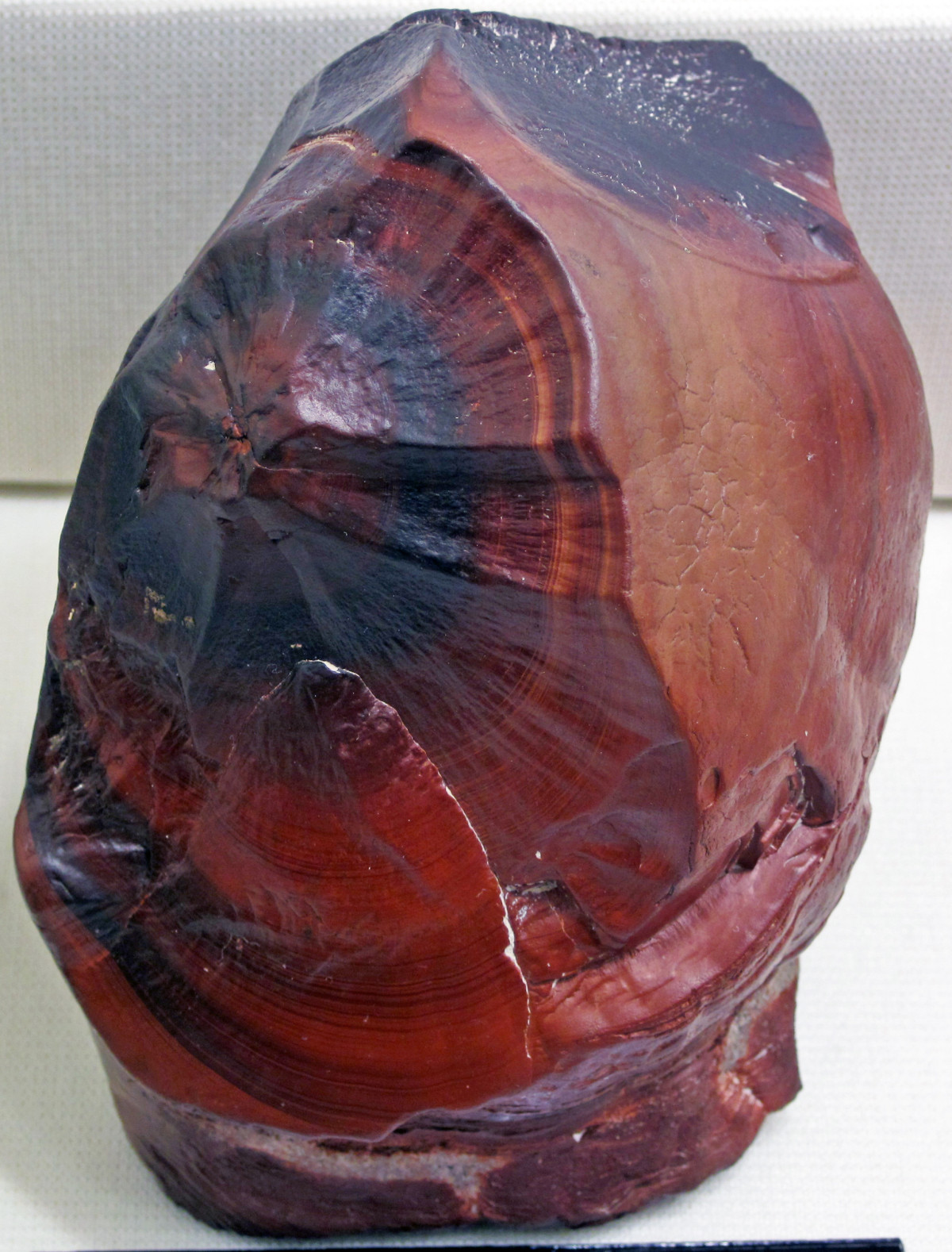 图片来源:James St. John | Flickr
图片来源:James St. John | Flickr
锡石的种类
正如锡石的别名和工业用途一样,许多锡石品种都与锡有关。事实上,只有一种锡石品种的名称中没有“锡”字。下面让我们逐一了解一下每种锡石。
木锡
木锡是锡石的一种微晶质(或隐晶质)品种。如果你熟悉玉髓和石英,那么木锡与玉髓的关系就如同锡石与石英的关系一样。
该品种具有同心、彩色带状纤维纹理环,类似于树桩上看到的环。
面团罐
面团罐是一种来自英国康沃尔郡的白色品种,其质地和颜色类似于未煮熟的面包面团,因此得名。
蟾蜍眼锡罐
蟾蜍眼罐的颜色和质地与面团罐相似,但其独特的特征在于其葡萄状或肾状的形态。蟾蜍眼罐还具有放射状的纤维和色带,使其看起来与蟾蜍的眼睛有些相似。
溪流锡
溪流锡是经溪水冲刷而形成的圆形锡。
艾纳利特
艾纳石是唯一一种名称中不带“锡”的锡石,它是一种锡石,五氧化二铁钽(FeTa2O6)含量高达10%。其最早产地是芬兰。
您已经掌握了基础知识,现在是时候了解锡石的象征意义和历史了。

锡石的意义和历史
锡石的含义与显化、智慧和保护相关。这种宝石也象征着神圣的光芒,被称为“神圣之石”。
自古以来,锡的主要来源是锡石。具体来说,从锡石中开采锡的历史可以追溯到铜器时代(公元前3500年至公元前2300年)。锡石锡也是最早的金属合金之一。
至于它的名字,不同的人会给出两种解释。一种说法是,它源自希腊语kassiteros ,意为“锡”,原因显而易见。
第二种解释来自前罗马时代的卡西特里德斯群岛,这些岛屿没有约定地点(但可能靠近西班牙)。
15世纪,矿工们开始从波希米亚(捷克)和萨克森(德国)的矿床中开采锡石。17世纪,这些地区的采矿业达到顶峰。
德国化学家马丁·海因里希·克拉普罗特于 1797 年首次发表了对锡石的描述。 到了 18 世纪和 19 世纪,英国康沃尔成为锡石生产的新热点。
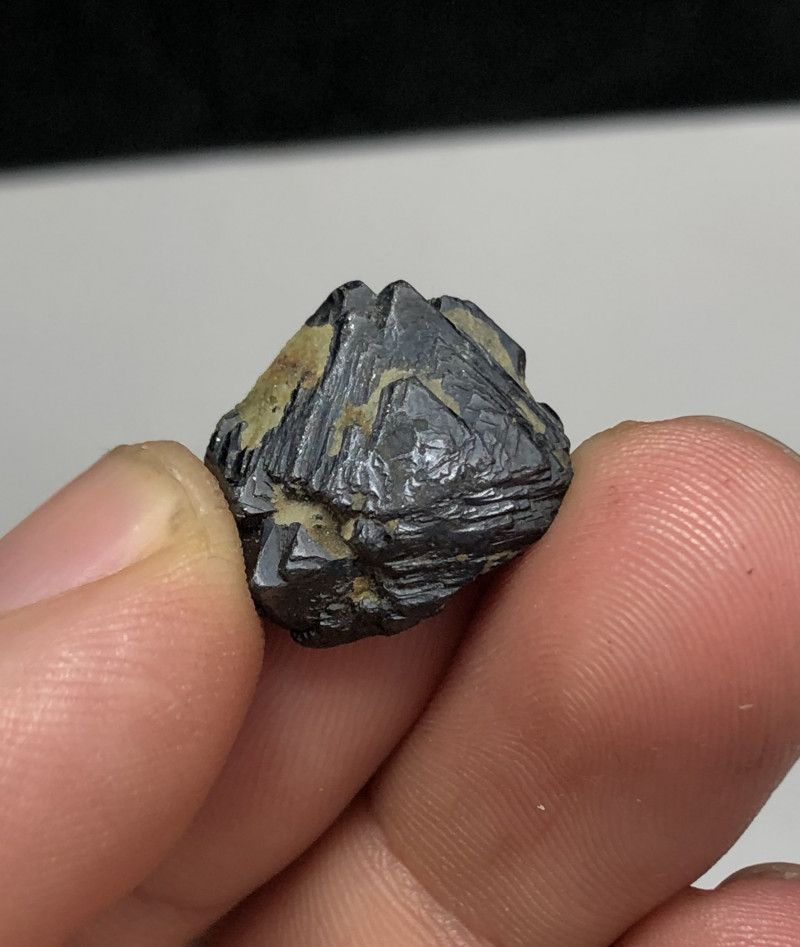
锡石的治疗特性
与其他宝石一样,锡石的颜色也影响着它作为疗愈石的功效。锡石晶体大多呈黑色,与其他黑色宝石一样,具有接地和平衡的功效。
棕色锡石与其他棕色宝石一样,能够打开根脉轮,带来保护和稳定。黄色或绿色锡石也是一种脉轮石,能够协调骶骨轮和心轮,让你的情绪和欲望和谐统一。
让我们来看看锡石对身体和情感的具体治疗益处。
身体康复
从生理角度来看,锡石据说可以治疗心肺疾病,帮助哮喘等疾病患者改善呼吸功能。此外,它还被认为可以刺激大脑,改善记忆力。
情绪疗愈
从情感角度来看,锡石晶体可以帮助你实现目标,并解决沿途遇到的问题。它尤其有利于分析性思维或数学思维。
此外,水晶治疗师也使用这种宝石来增强乐观、踏实和韧性。对于任何正在从被拒绝或被抛弃的痛苦中恢复过来的人来说,锡石可以帮助你拥有一个全新、更光明的开始。

锡石宝石特性
专家会根据锡石的颜色、切工、净度和克拉重量来判断其价值。他们还会检查其是否有任何改进。
颜色
色泽鲜艳的锡石价值最高,不仅因为它们更具吸引力,还因为它们能衬托出宝石的高光和光泽。即使是多色性,在色泽浓烈的宝石中也最为出色。
最常见的颜色是棕色和黑色,或者棕黑色。令人惊讶的是,锡石是异色的,这意味着其最纯净的形式是无色的。棕色和黑色来自铁杂质。
锡石的稀有颜色包括酒红色、红棕色、黄棕色和紫色。与许多宝石不同,浅色锡石通常比深色锡石更珍贵。
切
合适的刻面切割可以使锡石闪耀夺目,比钻石更璀璨。常见的刻面切割有祖母绿形、椭圆形、垫形和圆形。
木锡锡石通常被切割成凸圆形、自由形状或雕刻品。这些带状装饰使它们成为绝佳的装饰品。
此外,具有吸引人的晶体习性的锡石可以以原石(未切割)的形式出售。
明晰
大多数锡石原石都含有内含物。
通常,您会看到面纱状包裹体(晶体中愈合的裂缝,类似于指纹包裹体)或双相包裹体(晶体中充满液体和蒸汽的空腔)。玻利维亚锡石有时含有针状碧玺包裹体。
尽管较为稀有,但肉眼可见且无内含物的锡石(即肉眼无瑕的锡石)却最有价值。
克拉重量
肉眼无瑕的锡石宝石几乎总是重量不足1克拉。由块状材料制成的凸圆形宝石可以更大。
玻利维亚出产浅棕色至深棕色锡石,其中15克拉的刻面宝石净度极佳,25克拉的则净度一般。重量超过2克拉的无色锡石宝石备受追捧。
处理剂和合成物
虽然通常未经处理,但美国宝石学院 (GIA) 在 2001 年研究的一些“星光锡石”样本却显示出人工处理痕迹。这些宝石上刻有类似于产生星光的平行纤维的线条。
由于星光是一种宝贵的品质,因此要警惕出售的“星光锡石”标本,因为这种石头不会自然地显示这种光学现象。
科学家们已经制造出了合成锡石。它们主要用于研究,但可能很快就会出现在宝石市场上。
回到现实问题,天然锡石是如何形成的?
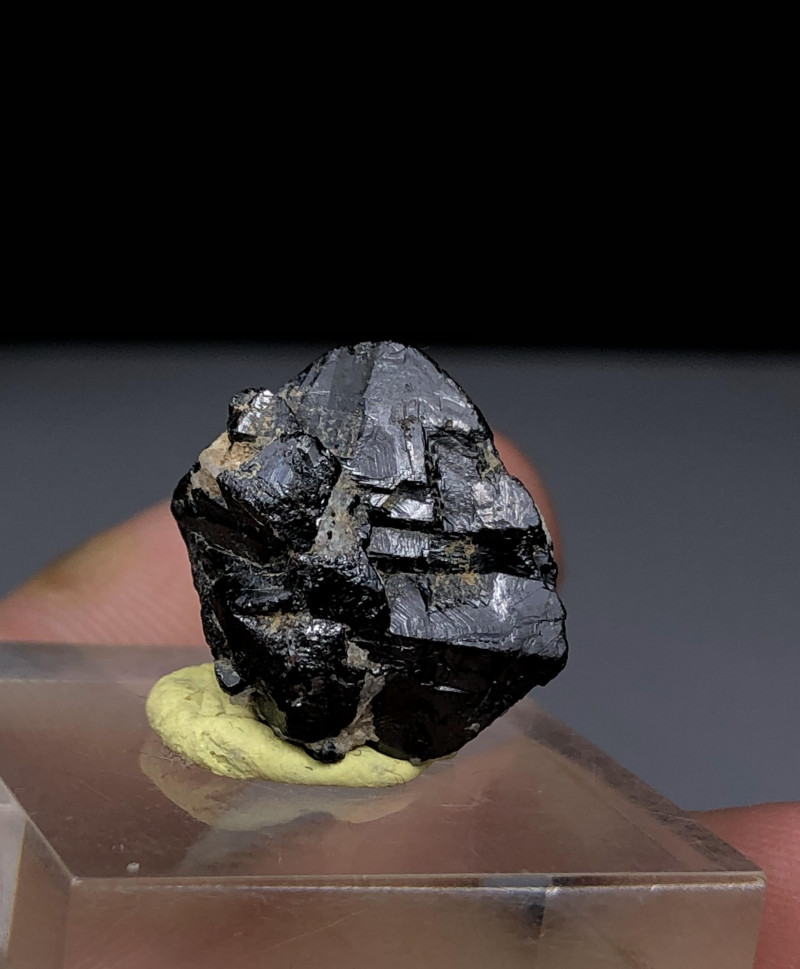
锡石的形成与来源
锡石通常是在携带溶解元素的水沉淀到岩脉中并蒸发,留下元素结晶时形成的。
大多数锡石形成于花岗岩、流纹岩和伟晶岩脉内。它也存在于冲积砂矿中,这种砂矿由水流携带矿物到新的区域(溪流锡矿常见)。
采矿地点
世界上哪里有锡石?如今,大多数宝石级锡石产自玻利维亚,其次是俄罗斯和中国。其他主要产地包括缅甸、尼日利亚、印度尼西亚、泰国和马来西亚。
较小的锡石来源包括:
澳大利亚
加拿大
捷克
日本
墨西哥
巴基斯坦
葡萄牙
西班牙
斯里兰卡
塔斯马尼亚
英国(英格兰)
美国(阿拉斯加州、加利福尼亚州、内华达州、南卡罗来纳州、南达科他州、弗吉尼亚州、华盛顿州)
越南
想看看有售锡石吗?那就让我们讨论一下价格方面的情况吧。
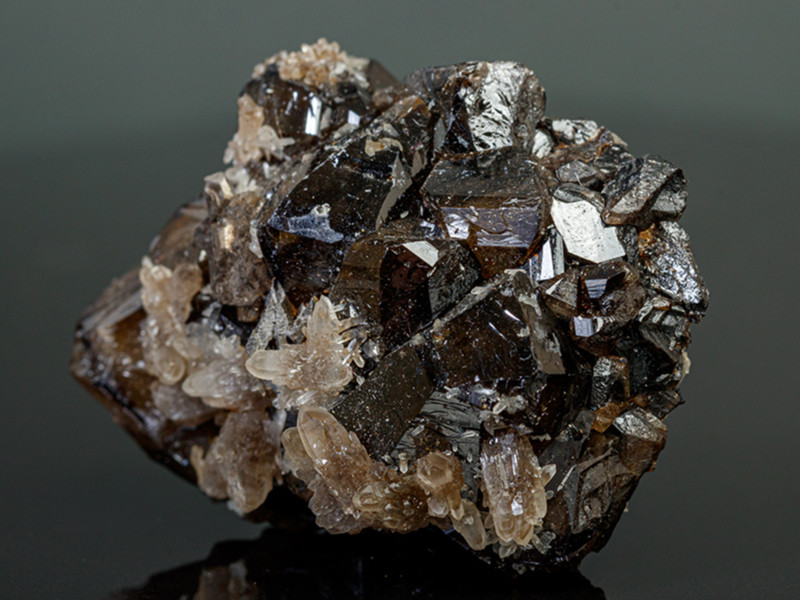
锡石的价格和价值
用于提取锡的锡石矿物和可切割宝石的原石价格差异很大。前者储量更丰富,通常以更大的数量定价。非宝石级锡石矿石每公斤价格约为3至5美元。
刻面锡石的批发价约为每克拉 80 美元。黑色水晶原石的价格要便宜得多,每克拉售价在 0.10 美元到 0.50 美元之间。然而,光泽亮丽、更为稀有的原石水晶售价可达 85 美元到 400 美元。
不透明滚磨锡石的价格通常在 3 至 5 美元左右。
锡石的保养和维护
幸运的是,锡石是一种相对坚硬耐用的宝石,非常适合日常佩戴。不过,我们建议将手镯或戒指等较脆弱的饰品进行保护性镶嵌,以防止刮伤。
锡石的坚固性也使其保养变得非常简单。最安全的清洁方法是使用温水、温和的肥皂和软毛牙刷。
着迷于锡石!
锡石的重要性主要在于其锡含量,但它的宝石也同样有助于振奋精神、保持冷静。佩戴一些锡石首饰,定能俘获路人的心!
搜索Gemstone Encyclopedia
最新的文章
彩虹格纹日光石是一种长石,由于内部含有各种包裹体,呈现出三种绚丽的光学效应。它绚丽多彩的光泽和格纹图案使其成为收藏家梦寐以求的珍宝!
12th Jan 2026
文章分类
How To's is where you will find helpful articles from gem Rock Auctions on how to cut gemstones, select gemstones and buy gemstones.
9文章数


